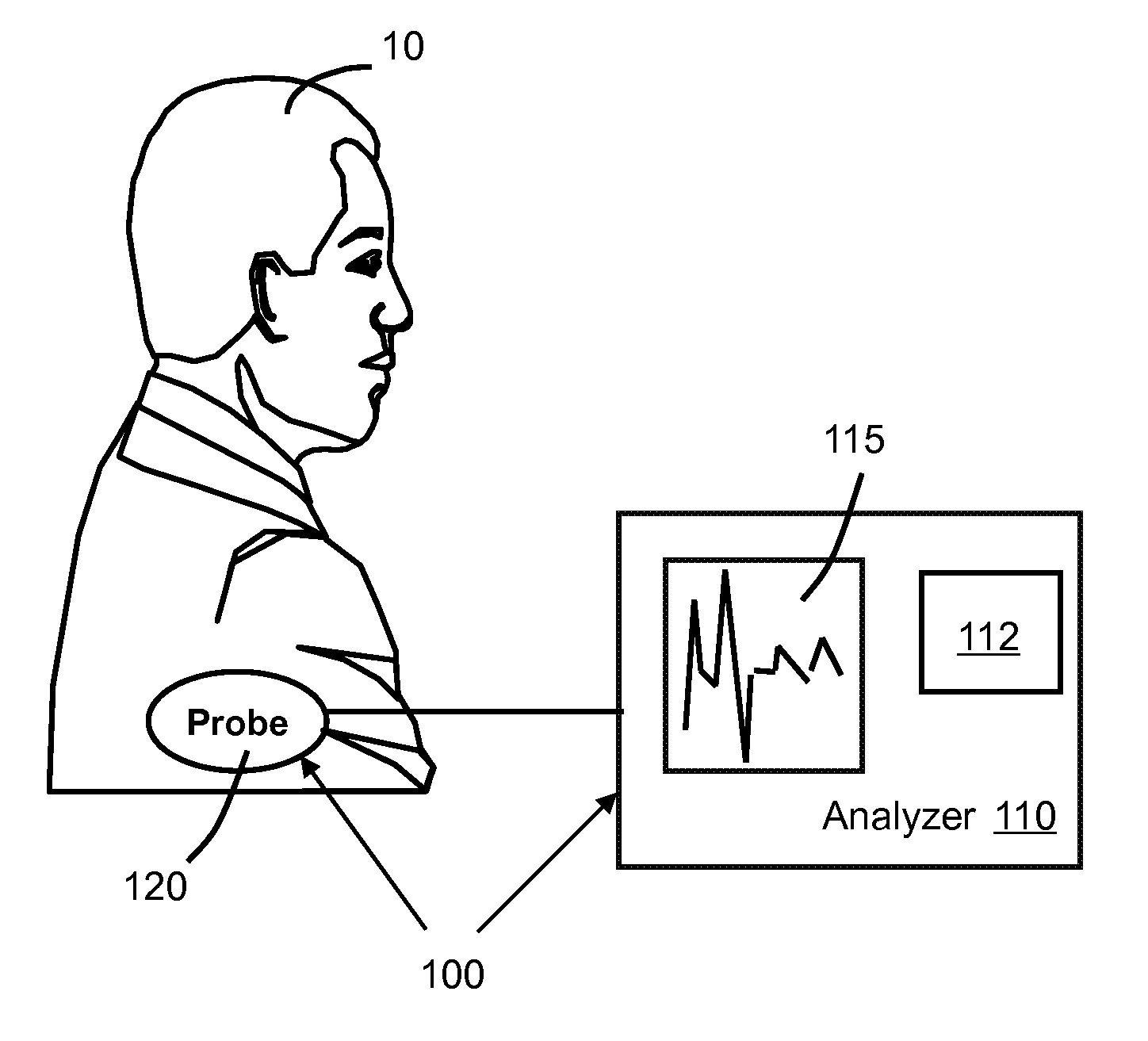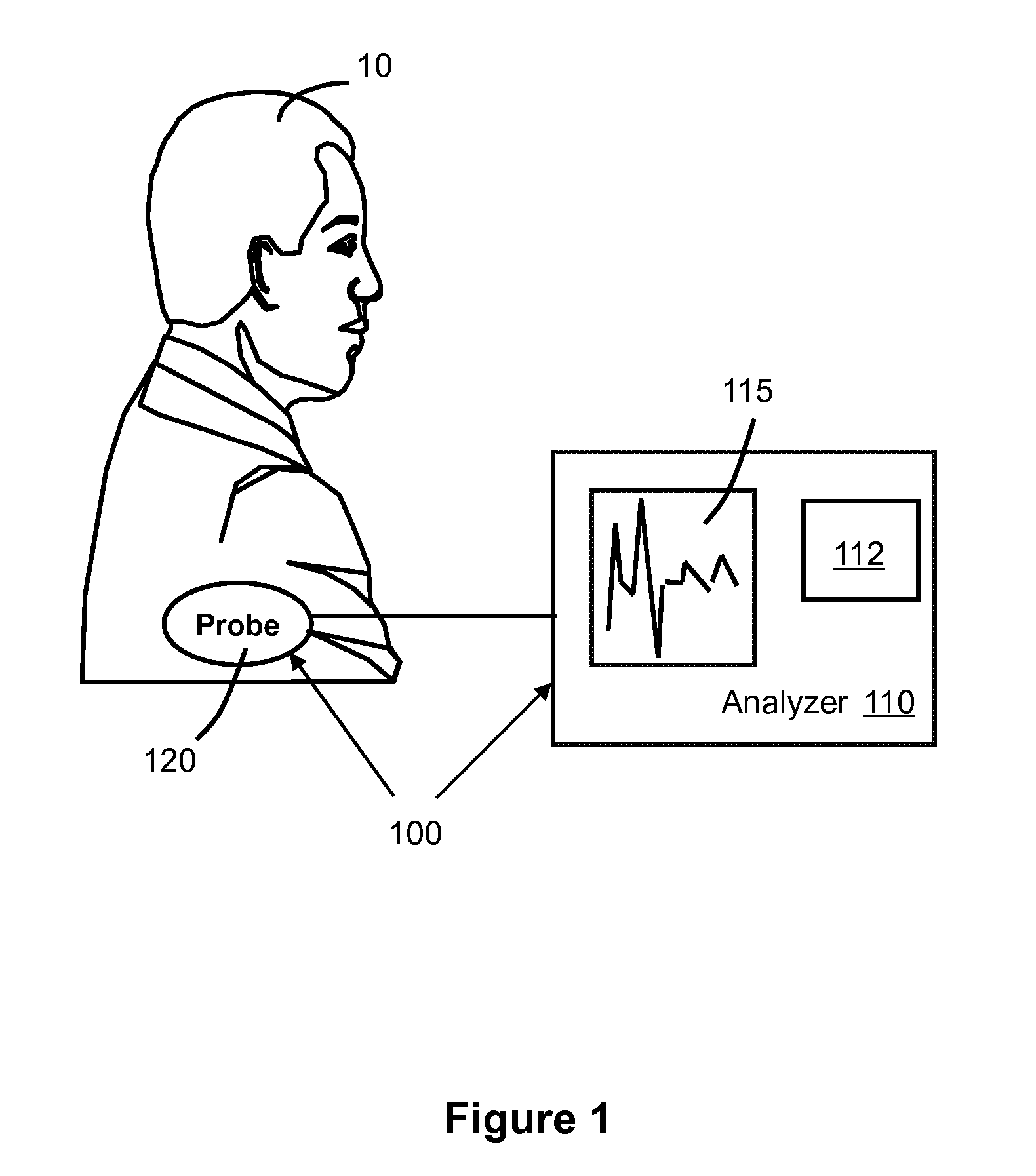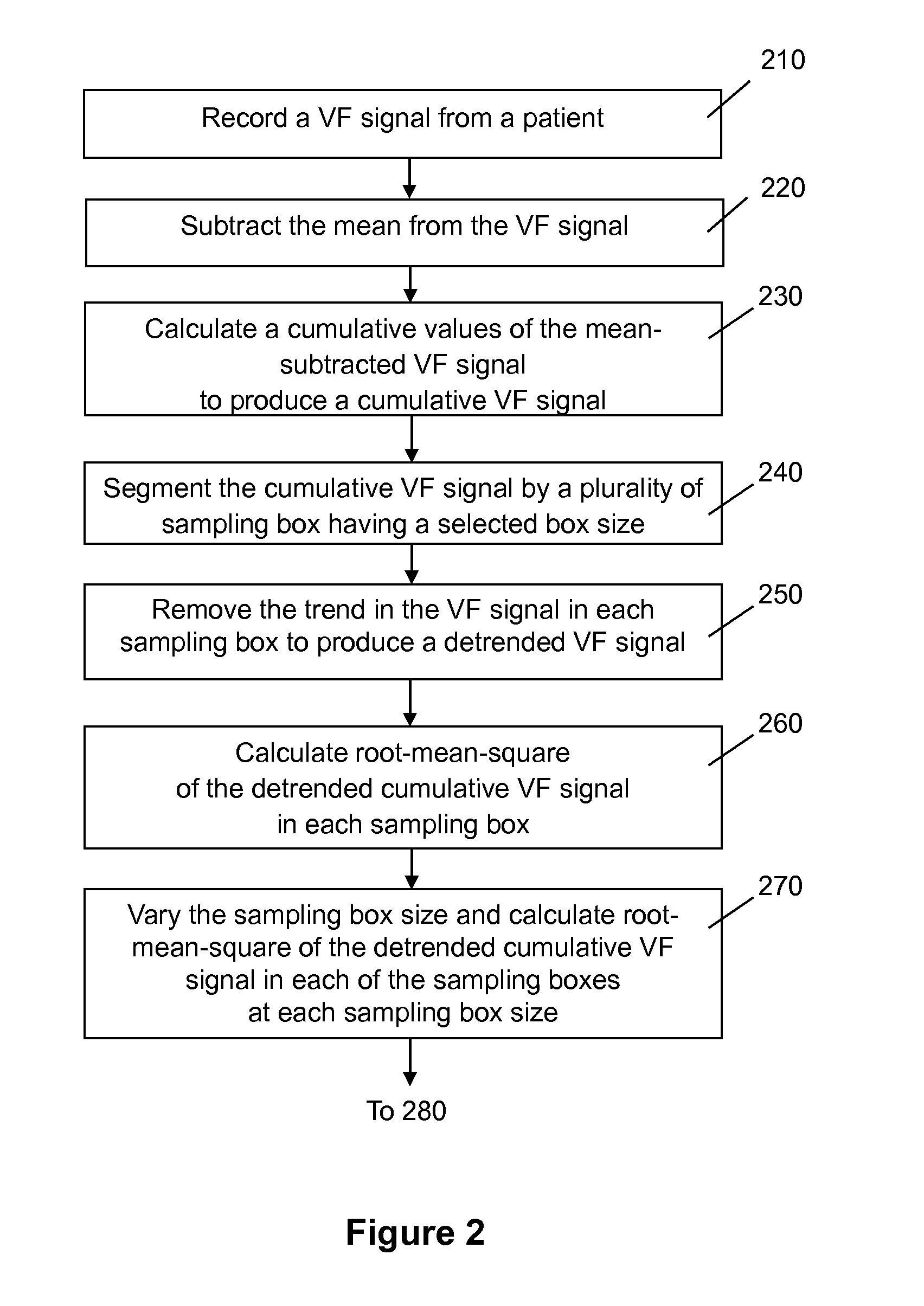System and method for predicting successful defibrillation for ventricular fibrillation cardiac arrest
a technology of ventricular fibrillation and cardiac arrest, applied in the field of system and method for predicting successful defibrillation of ventricular fibrillation cardiac arrest, to achieve the effect of convenient application and increased successful defibrillation ra
- Summary
- Abstract
- Description
- Claims
- Application Information
AI Technical Summary
Benefits of technology
Problems solved by technology
Method used
Image
Examples
Embodiment Construction
[0019]Referring to FIG. 1, a VF evaluation system 100 includes an analyzer 110 and a probe 120 that can be attached to a patient 10. The probe 120 can include a sensor, a transducer, or an electrode (e.g. in a Holter monitor) configured to measure VF signals from the patient 10. An example of the VF signals is the surface ECG signal. Other examples of the VF signals can include blood pressure and sensing signals obtained by a pulse oximeter. The probe 120 can send the VF signals to the analyzer 110, often in analog form. The analyzer 110 can include an analog-to-digital (A / D) converter for digitizing the VF signals. The analyzer 110 also includes a computer processor 112 that is configured to process and analyze the VF signals after the VF signals are digitized by the A / D converter. A pre-stored algorithm in the analyzer 110 can rapidly analyze the VF signals, and provide guidance to defibrillation treatments, as described in more detail below. The analyzer 110 can also include nece...
PUM
 Login to View More
Login to View More Abstract
Description
Claims
Application Information
 Login to View More
Login to View More - R&D
- Intellectual Property
- Life Sciences
- Materials
- Tech Scout
- Unparalleled Data Quality
- Higher Quality Content
- 60% Fewer Hallucinations
Browse by: Latest US Patents, China's latest patents, Technical Efficacy Thesaurus, Application Domain, Technology Topic, Popular Technical Reports.
© 2025 PatSnap. All rights reserved.Legal|Privacy policy|Modern Slavery Act Transparency Statement|Sitemap|About US| Contact US: help@patsnap.com



